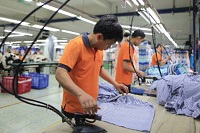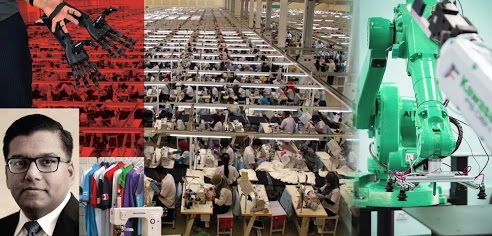 A McKinsey study states, Bangladesh, Vietnam, Cambodia may soon lose their competitive edge in the global garment industry as manufacturing and marketing advances may make it easier for US and European garment importers to produce garments closer to home. The study says that by 2025, around 25 per cent of global sourcing executives would source 50 per cent of their imported ready-made garments near Europe and the US. Forty-two per cent of the respondents believe that over 30 per cent of these imported garments would come from sources near Europe and America by 2025.
A McKinsey study states, Bangladesh, Vietnam, Cambodia may soon lose their competitive edge in the global garment industry as manufacturing and marketing advances may make it easier for US and European garment importers to produce garments closer to home. The study says that by 2025, around 25 per cent of global sourcing executives would source 50 per cent of their imported ready-made garments near Europe and the US. Forty-two per cent of the respondents believe that over 30 per cent of these imported garments would come from sources near Europe and America by 2025.
However, this may also cause a significant loss of business and employment for many Asian countries.
Shift in fashion influencers and trends
Earlier, when designers created new designs, brands would wait for 30-60 days before launching the final product. This would help them to evolve their consumers’ demands. Now, this demand is influenced by celebrities and social media personalities. The fast-paced fashion trends launched by these celebrities benefit small-sized, and internet-based fashion brands who are able to quickly transform a concept to a finished final product.
consumers’ demands. Now, this demand is influenced by celebrities and social media personalities. The fast-paced fashion trends launched by these celebrities benefit small-sized, and internet-based fashion brands who are able to quickly transform a concept to a finished final product.
Earlier, cost-consciousness amongst fashion leaders helped Asian garment manufacturers to win many new orders. However, since the last two decades labor costs in Asia too have been increasing. It is already higher in China than in Mexico. Hence, it makes sense for manufacturers to bring manufacturing closer to destination markets.
Reduction in production costs
In future, automation, robotics, and artificial intelligence will dramatically reduce manufacturing costs and time lead times. New sewing technologies will help brands automate sewing for complicated clothing items like a collared shirt or a pair of fancy-dress pants. Automation of warehousing, fabric handling during sewing, shipping, and storing of readymade garments will also reduce their production costs.
Near-shoring will benefit countries like Turkey, Mexico, Morocco, and several South American nations and islands. However, it may harm labor intensive Asian garments powerhouses like China, Bangladesh, and Vietnam. The concept can be beneficial only if it reduces the cost of garments sourcing by 70 per cent. However, this scenario is around 10 to 15 years away, view experts.
Garment automation does not indicate an export collapse for Asian manufacturers like Bangladesh or Vietnam. These countries can start exporting their clothes within the Asian markets of Bangladesh and Vietnam. However, automation may create major challenges for the employment sector of countries like Bangladesh. Hence, these countries would have to find alternative modes of employment for the displaced laborers; else they may lead to huge geopolitical and economic consequences.












